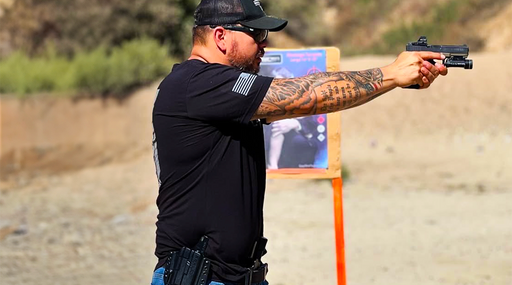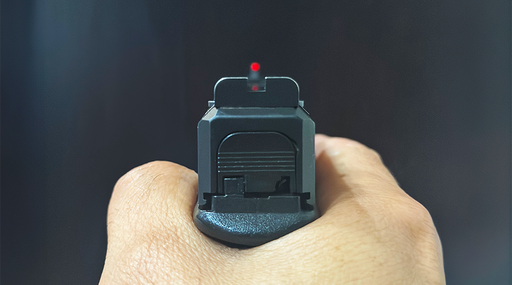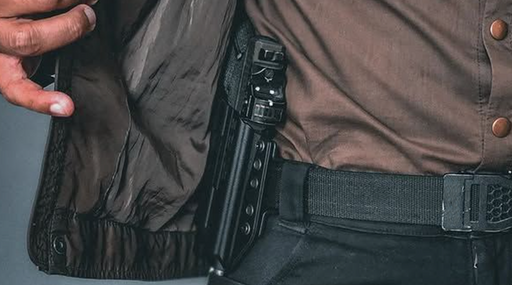It’s sad, really. In more than seven years of teaching concealed carry classes, when I ask for a show of hands from people who know someone who cranked a round off when they didn’t mean to, with the muzzle pointing somewhere other than toward a clear downrange area, up to half the class raises a hand.
Gun owners, we can and must do better. Of course, preventing injury, damage, and death resulting from faulty gun handling is our responsibility on an individual level. But one person’s inept gun handling can affect the rest of us. One negligently discharged round that causes loss of life adds apparent credence to calls for increased gun control.
Make no mistake, this writer is under no delusions about real-life frequency of “accidents” when compared to the benefits gun provide for self-protection. Data collected in the late 1990s by the Centers for Disease Control and Prevention, unpublished but discovered by Professor Gary Kleck of Florida State University shows that there are tens of thousands of defensive encounters peacefully resolved by the presence of a gun every day in the United States. Those incidences do not include gun uses by armed professionals, i.e., military, police, and security personnel. Unintentional gun injury numbers are miniscule in comparison, but still common.
If you’re one of the many Americans who’ve taken a defensive driving class, you’ve heard about that word “accidents.” And you heard that most such events are not genuine accidents, but collisions. Similarly with guns, true accidents are rare. Unintended discharges can generally be classified as two types: true accidents and negligent discharges (NDs). The latter are the norm, and are preventable.
The ACCIDENTAL Discharge: Causes and Prevention
Let’s talk about the true accidental discharge first. This refers to a firearm that discharges when there is nothing touching the trigger. It’s very rare, and most often seen when there is a product liability issue with a new firearm that’s been on the market for less than a year. People do drop firearms accidentally, and this was in the not-long-ago past how the rare instances of faulty manufacturing were discovered. The vast majority of modern handguns are “drop safe,” or made to not fire when dropped onto a hard surface.
In long guns, accidental discharges (ADs) are usually associated with the butt of the firearm sharply striking some object. Even with the safety in the “on” position, it is possible to jar some shotguns and rifles hard enough to force the firing pin to do its thing.
Preventing the AD is easily accomplished by avoiding setting the loaded handgun where it can fall, and being mentally present when handling it so as not to drop it. The shortest path to preventing an AD in a long gun is to store it and carry it with an empty chamber. When the firearm must be loaded on the range or afield, never allow the muzzle to cover anything you’re not willing to destroy. Included in all these times is the process of loading and unloading.
The NEGLIGENT Discharge: Causes and Prevention
Preventing negligent discharges (NDs) is easy: Keep EVERYTHING out of the trigger guard unless your sights are on target and you’re firing.
NDs can occur when the gun is in a person’s hand and they’ve allowed fingers to get inside the trigger guard when not firing. They can also occur when the gun is in storage or being carried. Handguns loose in pockets or purses are a primary source. Holsters that allow stuff to poke in from outside are another. I have even seen a ND occur when a precision rifle owner, who wasn’t so precise about checking his load condition or safety lever, put his rifle in a hard-sided case that has egg carton-style foam padding. He picked up the case and a bulge of foam protruded into the trigger guard, setting off his extremely light trigger. Fortunately, no one was hurt. But it’s a safety lesson no one present that day will forget.
Unfortunately, what’s simple isn’t always easy. So let’s examine the two primary sources of the ND:
Inexperienced Handlers
In this category fall people who are new to guns in general or maybe new to a certain kind of firearm and do not understand its basic operation. While they may have duly memorized firearms safety rules, many don’t yet understand how to apply them when their hands are on a real gun. As a result, they put fingers inside the trigger guard and often “muzzle” others or themselves without being aware of any of it.
Also in this category are children, teens, and even the occasional adult who think they know a lot about guns but don’t. A then-13-year old in my hometown provided a tragic example. He secretly took his mother’s handgun while she was in the process of moving after a divorce. He was eager to show it off to his younger cousins. When he displayed the gun to them, he made a show of “unloading” it by removing the magazine. He was in the process of explaining “see, it’s unloaded,” while pointing the firearm at one cousin and pulling the trigger. A few hours later, the young cousin died at the hospital from a gunshot wound to the abdomen.
Very Experienced Handlers
“I’ve been around guns all my life,” and “I was in the service for (X) years,” are two phrases that have earned my association with the need to be extra-vigilant about safety. Many people who boast of growing up with guns also have tales or scars from horrific gun injuries, as they never actually learned safe gun handling. Many people who ran a rifle in the military have lost their memory of gun safety, and most only handled rifles. The shorter barrel of a handgun often catches them in muzzle violations.
Some would argue that people who handle guns on the regular have a higher statistical chance of an ND simply because of increased hours in which it’s possible to have one. I disagree. Handling a gun safety day-to-day never involves having a finger or other objects inside the trigger guard except during a function check. While it is true none of us can be 100% attentive to the gun every second, it isn’t hard to habituate oneself to correct handling so even when we’re exhausted or distracted, there is no danger of an ND when handling a firearm.
WARNING SIGNS OF AN IMPENDING ND
Get training in safe gun handling and learn to identify unsafe handling. You’re probably not the range police and I’m not encouraging you to get in other people’s business. However, visual identification of others’ safety habits is a good way to identify what situations and individuals are to be avoided
ATTITUDE is the most frequent predictor of NDs by so-called experienced people. If your range buddy is a frequent bragger about his or her prowess with guns, or if they get offended when you ask them to abide by a rule (like “please show me it’s unloaded before I take it from you”), consider it a sign; find a new range buddy ASAP! That saying “pride comes before a fall” applies to NDs. Arrogance has no place in gun handling.
MECHANICAL ND PREVENTION SHOULD NOT BE ALL YOU SEEK
It’s unfortunate that some people, including policy-makers for at least one major urban police department, believe that double-action or otherwise heavy trigger pulls contribute to safety. Mostly they contribute to delaying or missing the first shot, except in the hands of experts. Always-heavy triggers can fatigue some shooters so quickly that they give up practicing.
Some people derive great peace of mind from having a safety lever on their handgun. But a safety is quite the opposite when one draws a gun under stress and doesn’t have the presence of mind to disengage it. Safeties are also sometimes a crutch or used as an excuse for the operator’s lack of control over his or her own fingers. I’m not kidding when I say that I firmly support your right to self-defense with a firearm, but if you’re not interested in training enough to eventually not rely on a mechanical safety, you’re not sufficiently committed to the craft and are elevating your risk if you’re ever chosen as a target of street crime.
Mechanical safety measures have a place. But like any part on an automobile, they can break or malfunction. Many of them slow down one’s ability to draw and fire rapidly. If you choose a gun with safety features that require your active involvement to defeat them, know that you have the obligation to train for the same.
GROW YOUR OWN SAFE GUN HABITS
Falling blindly in love is a happy experience—and for some, it occurs with guns and gear. Never be so in love with, or even just comfortable with, your gear that you cannot look at it with an objective eye. Holsters and guns can wear out, break, and become unsafe over time. Carry systems that are acceptable in a low-risk environment like the local range may not be secure enough to accompany you at work or play. Adopt a professional, objective attitude toward your gun and gear.
In an article for first-time gun owners, I address handling habits any gun owner, new or old, can practice. The skills addressed there will keep you not only safe in manipulating a handgun; they’ll keep it positioned so it’s ready to use when you want or need to.
If you’re new to the gun thing, you have to handle your firearms often enough to turn fear into respect. New or old gun owners alike should turn random handling into purposeful habits. Read the article linked in the previous paragraph; it’s a start. Get professional training. These skills are within virtually anyone’s reach. Preventing the ND is on you.
Questions are welcome; please post any you have in the comments.
Eve Flanigan is a defensive shooting and concealed carry instructor living in the American Southwest. Today she works full time as an instructor and writer in the gun industry. Flanigan loves helping new and old shooters alike to develop the skills needed to keep themselves and their loved ones safe.





















Leave a comment